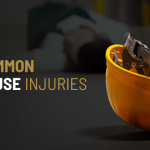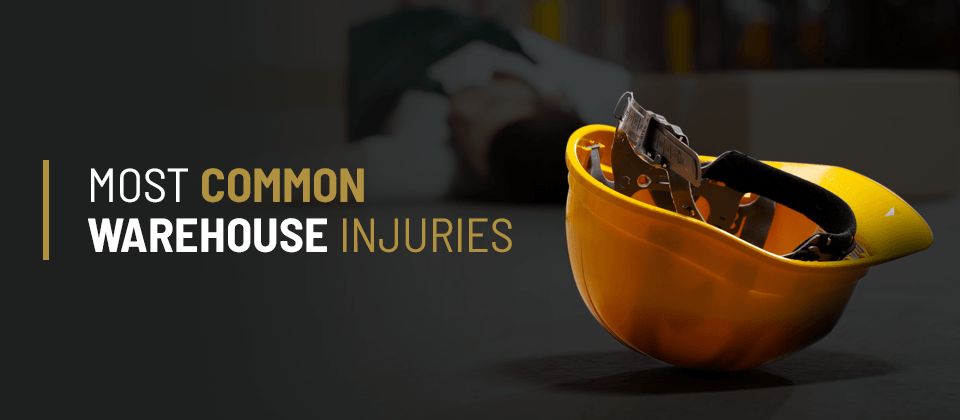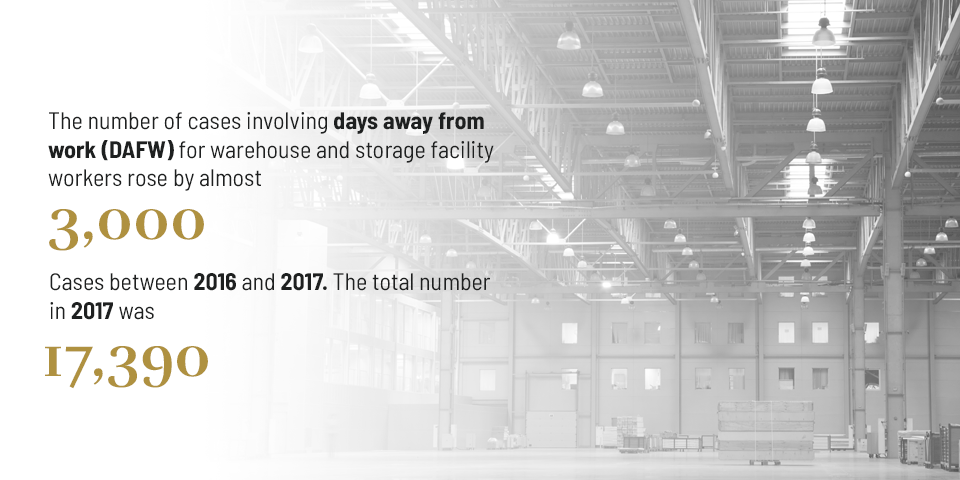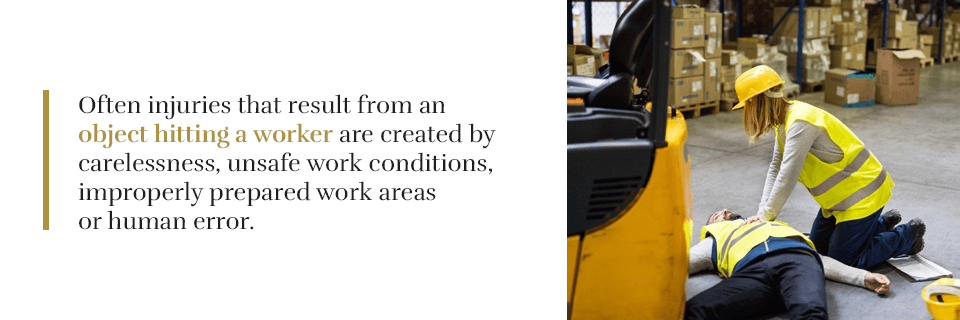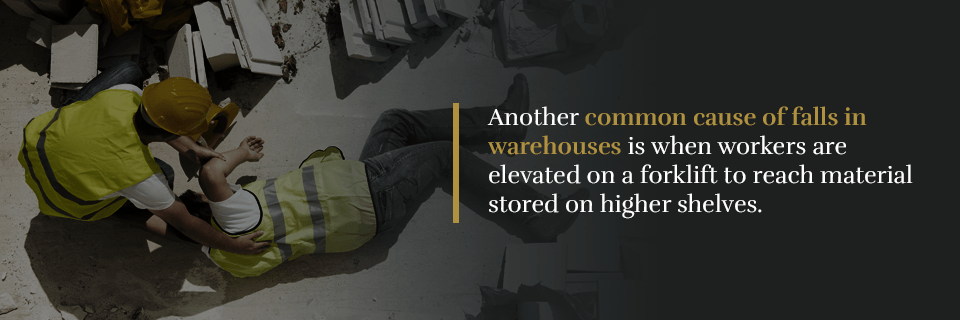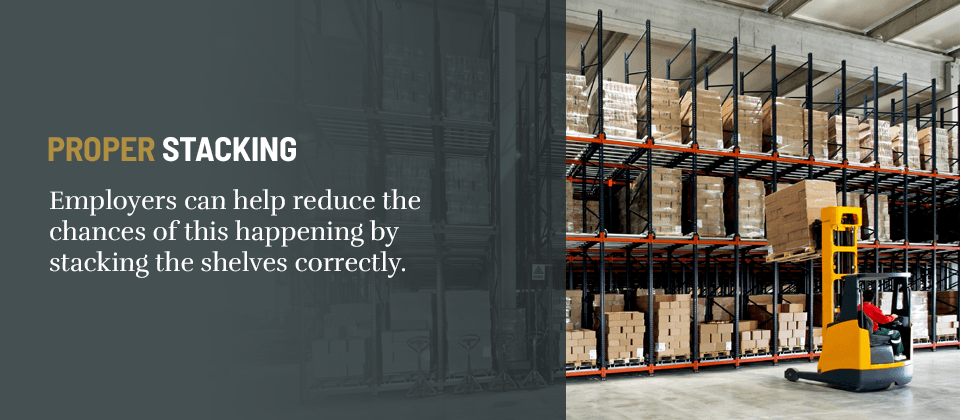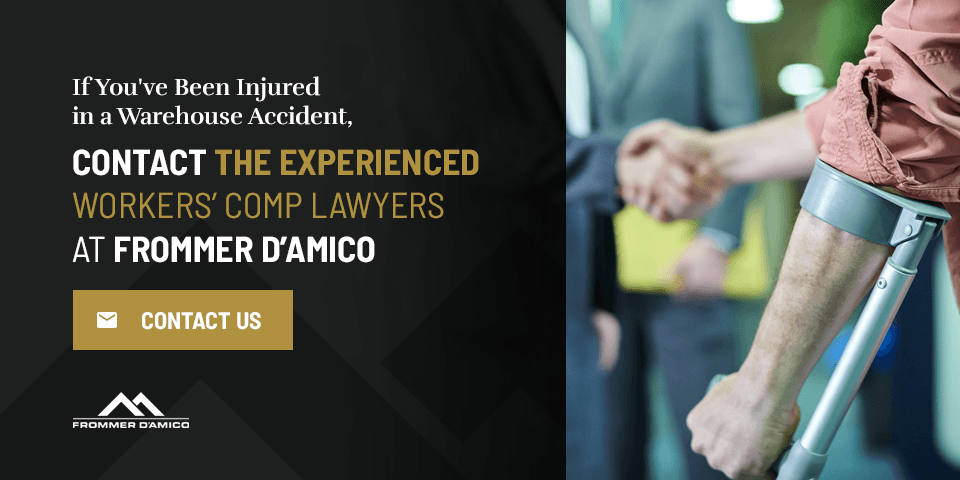Have you been injured in a warehouse while on the job? You are not alone. As increasing numbers of Americans choose to purchase goods online, retailers who cater to this clientele have built numerous warehouse facilities around the United States to store goods near primary shipping routes. In 2012, around 350,000 Americans worked in warehousing facilities. As of March 2019, the Bureau of Labor Statistics (BLS) stated that over 1.18 million people work at warehouse and storage facilities in the United States. Most of these workers are employed as freight stock and material movers and handlers, laborers and forklift truck and tractor operators. And that figure is projected to grow 8% by 2026.
As the number of Americans who work in warehouses increases, however, the number of these workers who are injured in work-related accidents also increases. In fact, BLS statistics show that warehouses are dangerous places for workers.
Are Warehouse Jobs Dangerous?
Yes, they can be. According to statistics from the BLS:
- In 2017, the latest year for which warehouse injury statistics are available, there were 22 fatalities at storage facilities and warehouses in the United States.
- The rate of recordable cases of nonfatal illnesses and injuries for warehouses and storage facilities in 2016 was 5.1 per every 100 full-time employees. This is considerably higher than the average for all industries of 3.2 per 100 full-time employees.
- This above-average injury rate also severely impacted production days. Work-related warehouse injuries that involved missing workdays, working with job restrictions or transfers was 3.7 per 100 full-time employees at storage facilities and warehouses. Again, this was considerably higher than the average of 1.7 per 100 full-time employees for all industries.
- The top five ways and places for warehouse injuries to occur are loading docks, forklifts, conveyor belts, material storage and manual handling and lifting.
- The number of cases involving days away from work (DAFW) for warehouse and storage facility workers rose by almost 3,000 cases between 2016 and 2017. The total number in 2017 was 17,390.
- The number of these cases that resulted from overexertion rose by 1,352 to 8,310 in 2017, while contact with equipment and objects rose 620 cases to 4,370, and slips, trips or falls rose 480 cases to 3,030.
- Warehouse workers involved in transportation or material moving in 2017 incurred 12,750 DAFW cases, resulting in an increase of over 3,100 cases from the previous year.
Types of Warehouse Injuries
Warehouse injuries can happen in a variety of ways.
1. Forklift
A forklift is a small industrial truck typically used in a warehouse or storage facility to raise or lower object such as pallets or to move or remove needed goods. Forklifts can be controlled either by operators who ride them or who walk beside them, depending upon the type of forklift being used. Forklift accidents are a common mishap in warehouse and storage facilities and one of the top causes of warehouse injuries and deaths. Sometimes these accidents are caused by novice workers who are unsure of how to handle forklift correctly or take a wrong turn. Other times these accidents may be caused by experienced operators either having an off day or making a mental error.
The National Institute for Occupational Safety and Health (NIOSH) says accidents involving forklifts are a combination of the forklift, the actions of the operator and the environment of the workplace. Accidents involving forklifts may result from them overturning and crushing workers, or dropping pallets or heavy goods during loading and unloading. Warehouse workers can be run over by forklifts, fall between a forklift and a rail on a loading dock or fall off a pallet that has been elevated by a forklift.
A few statistics about forklift accidents include:
- Between warehouse accidents and those that occur in factories where forklifts are also commonly used, they are responsible for around 85 deaths every year.
- While there may be fewer forklift accidents overall, they are usually more severe than other kinds of warehouse accidents. They’re responsible for around 35,000 accidents that result in serious injury every year.
- Forklift accidents that involve less serious injuries reach a total of about 62,000 incidents each year.
- The most common kind of accident involving a forklift is when one overturns. This kind of accident is responsible for just under one-quarter of all forklift accidents annually.
2. Overexertion
Overexertion is a major cause of injuries at warehouses and storage facilities. These injuries, which result from putting too much stress on the body by doing tasks like lifting, pulling, carrying or lowering, largely affect the back and shoulders but can also affect arms, wrists or knees. Workers often spend long hours each workday lifting or moving heavy objects and frequently work in awkward and uncomfortable positions. Overexertion injuries can cause chronic pain and limit the movements of injured workers.
In 2017, the BLS recorded over 8,000 overexertion injuries.
Besides the back, which is responsible for about 60% of all overexertion injuries, other warehouse injuries caused by overexertion involve:
- Injuries to the neck
- Muscle strains
- Sprains and tears of muscle tissue
- Tendon injuries
- Injuries to joints in the arms or legs
- Injuries to connective tissues
- Nerve injuries
- Overexertion can also lead to heart attacks
Overexertion injuries are often the result of workers not being trained adequately in how to lift or carry heavy objects. Another cause is workers who are asked to complete tasks for which they do not have the physical capabilities.
3. Loading Dock
Loading docks are some of the most hazardous places for employees who work in a warehouse or a storage facility. In fact, the loading dock is the most common place for a warehouse worker to be injured. The U.S. Occupational Safety and Health Administration (OSHA) reports that 25% of all accidents that take place in a warehouse happen on loading docks. Some estimates say that for every accident, there are 600 near misses.
Workers can be crushed between forklifts and trailers while they are loading or unloading goods. They can fall off docks, which, at an average height of 44 to 48 inches, means a fall would almost always result in a serious injury. They can be hit by trucks unaware of their presence. They can injure themselves if they try to load or unload heavy materials from the dock to the truck and vice versa. They can be victims of carbon monoxide poisoning if they’re working for long periods of time near a truck that leaves its engine running.
Accidents involving the loading dock include forklifts that run off the dock, falling objects that strike a worker, trucks that pull away too suddenly or when the truck shifts when a worker or a forklift operator is entering or leaving the truck.
4. Hit by Something
There are a lot of moving parts in warehouses and storage facilities. Forklifts zooming around, lots of motion around loading docks, workers constantly lifting or moving heavy objects like pallets full of goods. It’s not hard to imagine in this busy environment that being hit by something, like a forklift or an employee moving a pallet, would happen on a fairly regular basis. It does.
It’s not just the danger of being hit by something like a forklift that workers need to worry about, but objects stored high on pallets shifting and falling and striking them. In fact “high stacking” that owners practice in almost every warehouse or storage facility — and even in many warehouse-type stores where workers must deal with this problem as well — can lead to severe injuries.
Often warehouse injuries that result from an object hitting a worker are created by carelessness, unsafe work conditions, improperly prepared work areas or human error. Being hit with an object can result in head or neck injuries, concussions, shoulder injuries like rotor cuff tears or back injuries that include lumbar disc herniations.
5. Caught Between
It’s frightening when you look over the accident reports compiled by OSHA to see how often workers in warehouses or storage facilities are caught between pieces of equipment. A worker can be caught between a storage unit and a forklift. Caught between accidents don’t have to involve a worker’s entire body. Caught between accidents frequently happen when a worker tries to lift materials that require the use of equipment, which result in a hand or fingers being crushed between heavy objects.
Other caught between accidents include equipment rollovers where a piece of machinery like a forklift falls over onto an employee or an unguarded moving machine part.
Some of the warehouse injuries caused by caught between accidents include:
- Amputations
- Bruising
- Tissue damage
- Muscle strains, sprains and tears
- Neck injuries
- Fractures
- Internal organ damage
- Spinal cord injuries
- Lacerations
- Paralysis
- Scalping
- Traumatic Brain Injuries (TBI)
6. Slips and Trips
Slips and trips injuries aren’t as common as overexertion injuries in warehouses and storage facilities, but they still happen quite often. The BLS recorded over 3,000 cases in 2017.
Common causes for slips are:
- Slippery materials like water, ice, snow, powders, oils or granular solids
- Slippery services such as polished stone or tile, smooth patent concrete or metal
- Inappropriate footwear for the workplace and the kind of surface on which an employee needs to work
Common causes of trips include:
- Uneven walking surfaces
- Unseen or unexpected platforms, thresholds or steps
- Loose rugs or mats or wrinkled carpeting
- Exposed or loose wires, cords or cables
- Clutter on the stairs or floor in the workspace
- Inadequate lighting in poorly lit work areas, hallways or stairs
7. Falls
Falls are often included along with slips and trips in many accidents reports in warehouses. Falls, however, can be quite different than the slip or trip. Falls can happen on an elevated level or on the same level. We briefly discussed above how dangerous falls from loading docks can be for workers, resulting in serious warehouse injuries or even fatalities. Falls from ladders can also be dangerous. Working in warehouses, an employee on a ladder might not be seen by another worker who’s coming around the corner operating a forklift or pulling a pallet carrier.
Another common cause of falls in warehouses is when workers are elevated on a forklift to reach material stored on higher shelves. Too often workers will try to keep one leg on the forklift and another on the shelf to help them move the material. If inexperienced or not done carefully, this can result in a dangerous fall.
8. Truck Accidents
Warehouse operators frequently contract with trucking companies to move their goods around the country. Even if a warehouse operator has a fleet of their own trucks, trucking accidents can occur in areas like parking lots or loading docks. Workers can be injured while they are moving materials in and out of the trucks. Trucks will occasionally shift, which will separate them from the loading dock and leave a space which workers can trip or fall in between. Trucks can hit workers while they’re backing up, especially if they’re moving into a new facility with which they are not familiar. Fatigue, an issue for many truck drivers, can affect their attention and awareness as they are backing into loading bays. These conditions may make it more likely that workers will be injured as trucks are backed into the loading area.
Working around trucks can also be a problem for forklift operators as they move heavy loads in and out of trucks on loading bays. A shifting truck or careless moment can send a forklift off the edge of a loading dock.
9. Hazardous Materials
Employees who work in production or distribution centers that receive shipments of volatile or hazardous materials need to be constantly aware of the possibility of spills. These spills don’t need to be large quantity spills. Small spills can be just as dangerous for the safety of workers.
Hazardous materials can be anything from radioactive material to flammable liquids. Regardless of the nature of the material, they can all cause harm to warehouse workers. Hazardous materials are defined as any material that can produce harmful physical effects such as a sudden release of pressure, fire, acute health effects such as burns and convulsions or chronic effects like cancers and organ damage.
Talk To An Attorney About Your Injury
How Your Employer Can Prevent Injury
For all of the hazards present in a warehouse or storage facility, your employer can reduce the chances of work-related injuries in several ways.
1. Proper Stacking
Workers in warehouses are regularly hurt when objects shift or fall off of elevated shelves. Employers can help reduce the chances of this happening by stacking the shelves correctly. Heavy material should always be at the bottom. Depending upon the number of shelves used, the higher they go, the lighter the loads they should bear. An employee may still suffer an injury if they are struck by an object that falls from a height, but the chances of serious injury are reduced if the object is a light one.
Also make sure that the pallets stacked on shelves have an adequate amount of space between them to avoid collapse issues when being loaded or unloaded by forklifts.
2. Preventing Slips Trips and Falls
As we noted above, some of the main reasons for slips, trips and falls are cluttered or messy workspaces, poorly or dimly lit halls and stairways and wet or highly polished floors. Employers can help this problem by stressing the need to clean work areas, allotting extra time if needed to do so and making sure that all hallways and stairwells have proper lighting. If floors need to be highly polished or have slippery surfaces, the employer should ensure that the worker is using the right kind of footgear such as a nonslip boot when performing a task in these areas.
3. Proper Training
Ensuring employees have proper training deals with a variety of different workplace issues. Employers need to make sure that adequate barriers are installed in loading dock areas and that workers know how to put these barriers in place when needed. Safety guard rails and fall protection barriers should be present in every loading dock.
Forklift operators need to make sure they have the necessary training to operate these vehicles, and employers need to make sure that the forklifts are in proper operating condition and meet industry standards.
Employers also need to train workers, especially new employees, how to lift heavy loads properly. If possible, the employer should provide tools that will help workers to do these tasks. With proper training and equipment, a worker does not need to overexert themselves, regardless of the task they are performing.
4. Hazardous Materials
Employees who work with hazardous materials or in areas where hazardous materials are stored in a warehouse need to be properly trained in the safe handling of these materials and how to deal with them if spills occur. There are legal requirements concerning the handling of almost all hazardous materials. The best thing an employer can do is follow the letter of the law when it comes to the handling and training needed to deal with these materials.
Workers’ compensation costs can run into the billions of dollars every year. Employers can dramatically reduce these costs by implementing safety procedures and proper training.
What to Do If You’ve Been Injured at Work
If you have suffered a work-related injury, follow these steps:
1. Seek Immediate Medical Help
The most critical thing to do is to deal with the injury. If your facility has an on-duty nurse, go and see them. If it’s a more serious injury, request emergency medical services right away. Do not try to “tough it out.” Make sure that you tell every medical professional who you see that you have suffered a work-related injury. This is essential if you decide file a workers’ compensation claim later.
2. Notify Your Supervisor or Employer About Your Injury
While Pennsylvania law allows an injured worker 120 days to notify their employer about an injury, it’s always best to do it as soon as you can for two important reasons:
- If you tell your supervisor that you have been injured within the first 21 days, your workers’ compensation benefits will start from the first day that you were injured. If you wait until after the 21 days but before the 120-day statutory limit, your benefits would start from when you reported the injury.
- Employers and their insurance companies don’t like to pay workers’ compensation benefits if they don’t have to and look for any excuse either not to pay you or to reduce the amount of money that you will receive. If you wait to report your injury for several weeks or even a month or two after you suffer it, your employer and their insurance carrier will argue that you are not hurt badly, or maybe that you weren’t hurt at all.
3. File a Workers’ Compensation Claim
You generally have three years from the time that you were injured to file a workers’ compensation claim in Pennsylvania, although this timeline can differ for repetitive work warehouse injuries, exposure to hazardous or toxic materials. If your employer and their insurance carrier accept your claim of an injury, then you’ll start to receive workers’ compensation benefits. If they don’t, you need to file a workers’ compensation claim. Do not wait longer than the three-year deadline because if you do, you will not be eligible for benefits.
4. Contact a Workers’ Compensation Attorney
This is especially crucial if your employer and their insurance company have denied your benefits. As we noted above, employers and their insurance carriers don’t like to pay injured workers money. They will often use every trick in the book either to refuse payment or to pay you as little as possible. An experienced workers’ compensation attorney can help you navigate the often tricky waters of the workers’ comp system and help you get the benefits to which you may be entitled.
If You’ve Been Injured in a Warehouse Accident, Contact the Experienced Workers’ Comp Lawyers at Frommer D’Amico
It’s bad enough being injured on the job. When that pain and suffering are compounded by an employer and their insurance carrier refusing to pay you benefits to help you deal with that injury, the experienced workers’ comp attorneys at Frommer D’Amico can help. We specialize in workers’ compensation cases, and we’ve won our clients millions of dollars in benefits and awards.
If you’ve been injured in a warehouse accident, and you would like to talk to an attorney about your situation, we offer a free consultation. You can contact us at 1-717-400-1000 or visit our contact us page where you tell us how to get in touch with you and leave us a few details about your case. A member of our team will get back to you as soon as possible.
